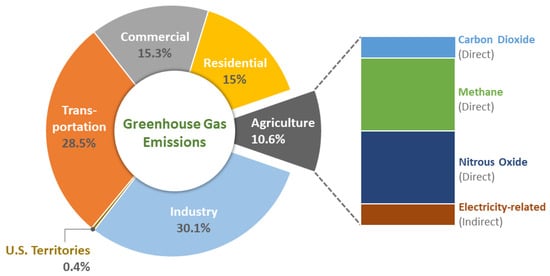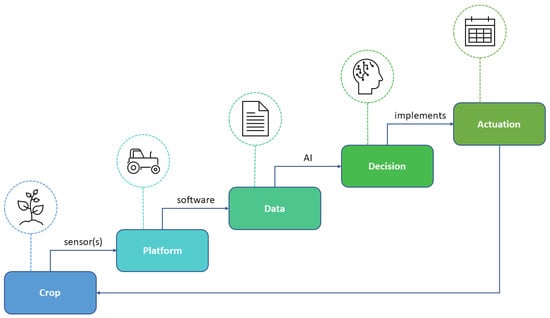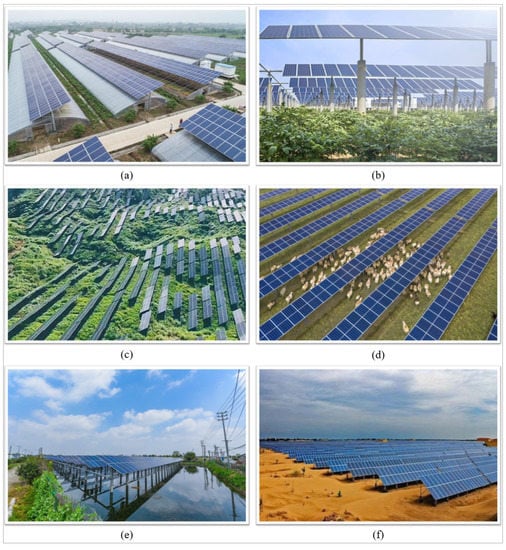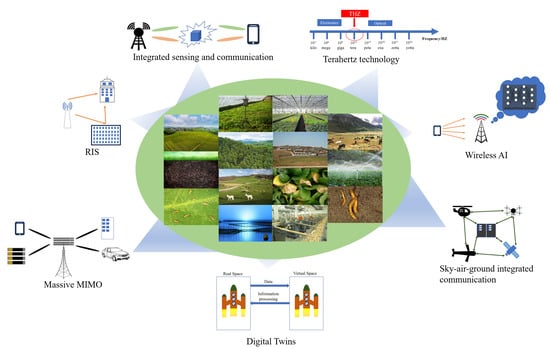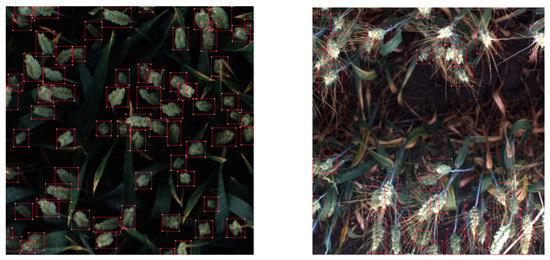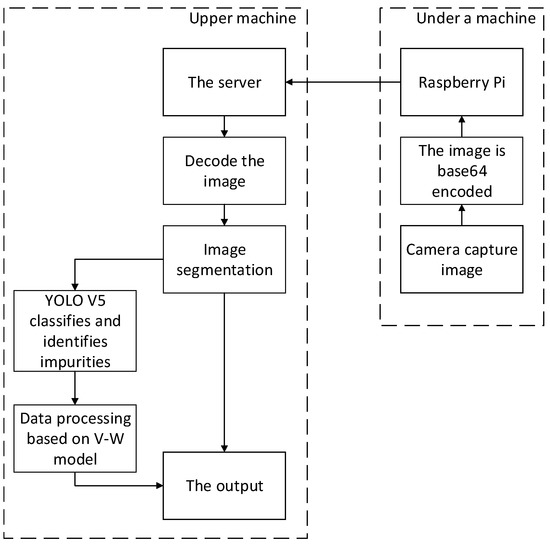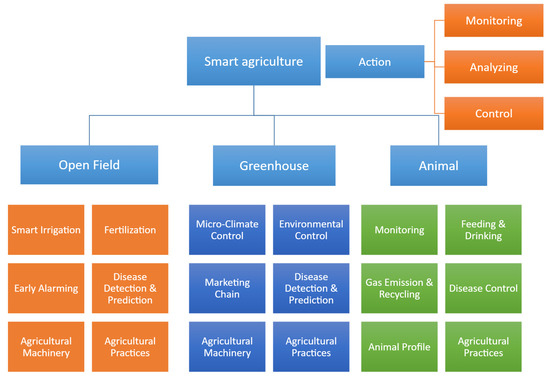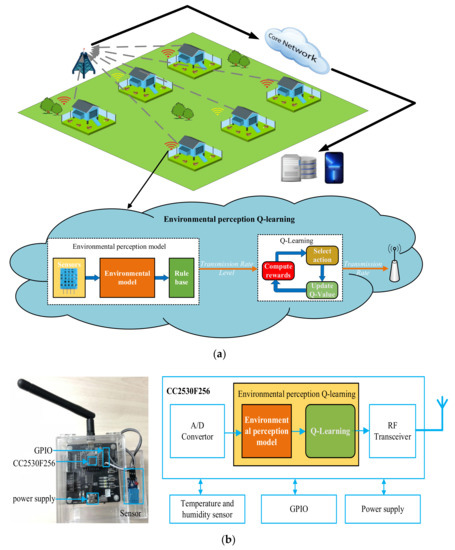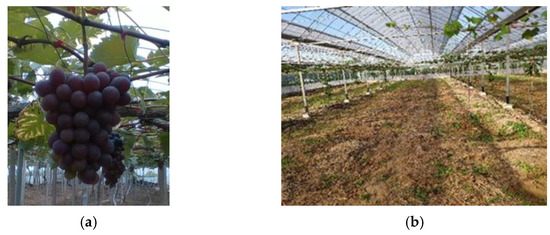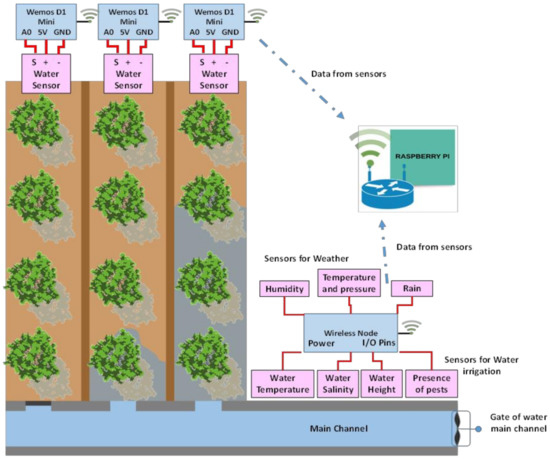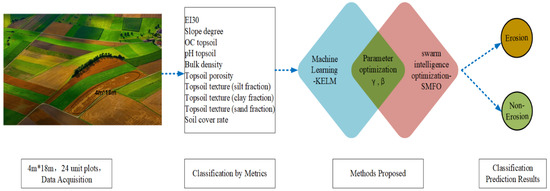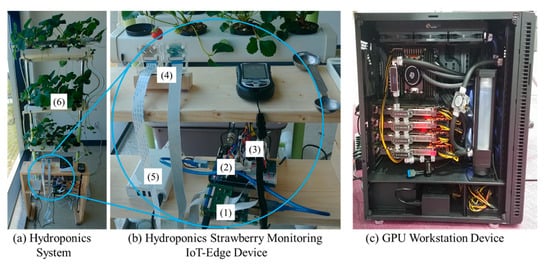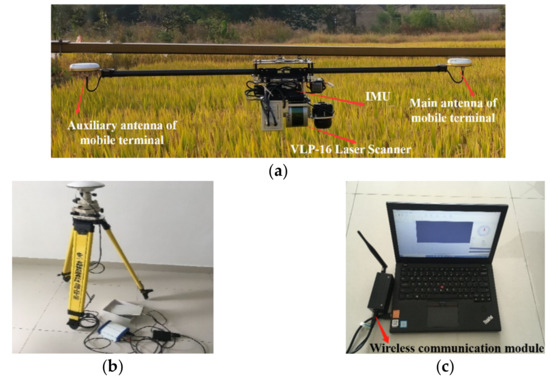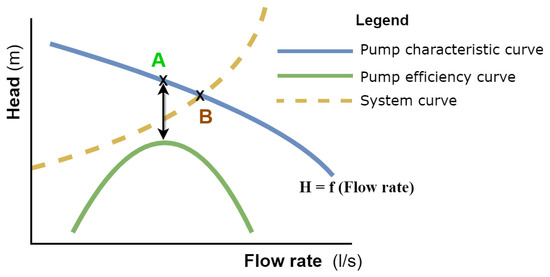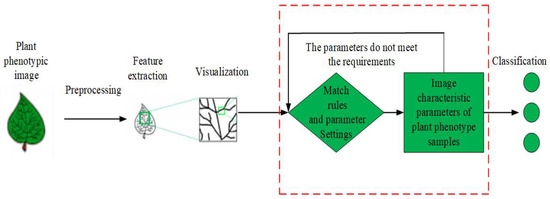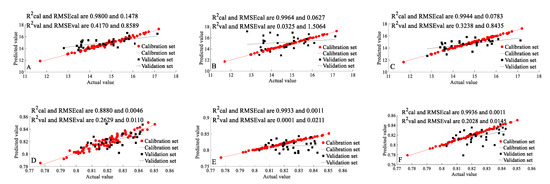Electronics for Agriculture
A topical collection in Electronics (ISSN 2079-9292). This collection belongs to the section "Computer Science & Engineering".
Viewed by 129267Editors
2. School of Engineering, College of Science, University of Lincoln, Lincoln LN6 7TS, UK
Interests: Internet of Things; sensor networks; green computing; cloud and fog computing; fault diagnosis; wireless sensor networks; multimedia communication; middleware; security
Special Issues, Collections and Topics in MDPI journals
Interests: agricultural robotics and automation; environmental physiology of fresh produce and ornamental crops; modified atmosphere packaging; farm decision support systems
Special Issues, Collections and Topics in MDPI journals
Interests: agricultural internet of things; wireless sensor networks; energy harvesting; embedded machine learning
Special Issues, Collections and Topics in MDPI journals
Interests: agricultural internet of things; wireless network security; network coding security; applied cryptography
Special Issues, Collections and Topics in MDPI journals
Interests: cyber security; privacy preservation; risk management; routing protocols; vehicular networks; social network analysis; power electronics
Special Issues, Collections and Topics in MDPI journals
Topical Collection Information
Dear Colleagues,
Electronics plays an important role in all fields, especially during the wave of the fourth industrial revolution (Industry 4.0). For example, ubiquitous sensing can be achieved through remote sensing, wireless sensor networks, drone swarm, and crowdsensing. Ubiquitous computing in any device, in any location, and in any format comes true with the help of embedded computing, edge/fog computing, and cloud computing. Benefitting from artificial intelligence and big data technologies, ubiquitous intelligence makes the world smarter.
Human society has experienced three agricultural revolutions from traditional indigenous farming to mechanized farming, and elementary smart agriculture more recently. However, the agriculture industry at the current stage still faces many challenges, including global food security, ecological and public health problems, animal welfare, lack of digitization, lack of intelligence, food safety, inefficient supply chain management, etc.
The above challenges are expected to be addressed by applying cutting-edge electronic and information technologies into agriculture toward the fourth agricultural revolution (Agriculture 4.0). This has attracted unprecedented attention from governments, industry, and academia all over the world. The objective of this Topical Collection is to provide a forum for researchers from diverse interdisciplinary areas to present their latest achievements in smart agriculture.
Prof. Dr. Lei Shu
Prof. Dr. Simon Pearson
Dr. Ye Liu
Dr. Mohamed Amine Ferrag
Prof. Dr. Leandros Maglaras
Collection Editors
Manuscript Submission Information
Manuscripts should be submitted online at www.mdpi.com by registering and logging in to this website. Once you are registered, click here to go to the submission form. Manuscripts can be submitted until the deadline. All submissions that pass pre-check are peer-reviewed. Accepted papers will be published continuously in the journal (as soon as accepted) and will be listed together on the collection website. Research articles, review articles as well as short communications are invited. For planned papers, a title and short abstract (about 100 words) can be sent to the Editorial Office for announcement on this website.
Submitted manuscripts should not have been published previously, nor be under consideration for publication elsewhere (except conference proceedings papers). All manuscripts are thoroughly refereed through a single-blind peer-review process. A guide for authors and other relevant information for submission of manuscripts is available on the Instructions for Authors page. Electronics is an international peer-reviewed open access semimonthly journal published by MDPI.
Please visit the Instructions for Authors page before submitting a manuscript. The Article Processing Charge (APC) for publication in this open access journal is 2400 CHF (Swiss Francs). Submitted papers should be well formatted and use good English. Authors may use MDPI's English editing service prior to publication or during author revisions.
Keywords
- New electronic equipment and device for new smart agricultural application
- Industry 4.0 technologies for Agriculture 4.0 (agronomy, horticulture, forestry, aquaculture, livestock farming, etc.)
- Internet of Things in agriculture (WSNs, UAVs, remote sensing, crowdsensing, etc.)
- Artificial intelligence in agriculture (artificial neural networks, deep learning, machine vision, image recognition, distributed computing, parallel computing, federated learning, etc.)
- Robotics and autonomous systems in agriculture
- Big data analytics in agriculture (data fusion, data mining, knowledge extraction, etc.)
- Fault diagnosis during agricultural production and harvesting
- Security and privacy preserving in the Agricultural Internet of Things (threats and attack models, cryptographic mechanisms, anonymity and secret sharing, secure mathematical models, privacy-preserving technology, blockchain technology, authentication and access control, etc.)
- Smart agricultural applications (plant phenotype, automated flower picking, meat quality analysis, plant disease recognition, three-dimensional reconstruction, rice seed classification, air quality monitoring and control, analysis of poultry behavior, etc.)









